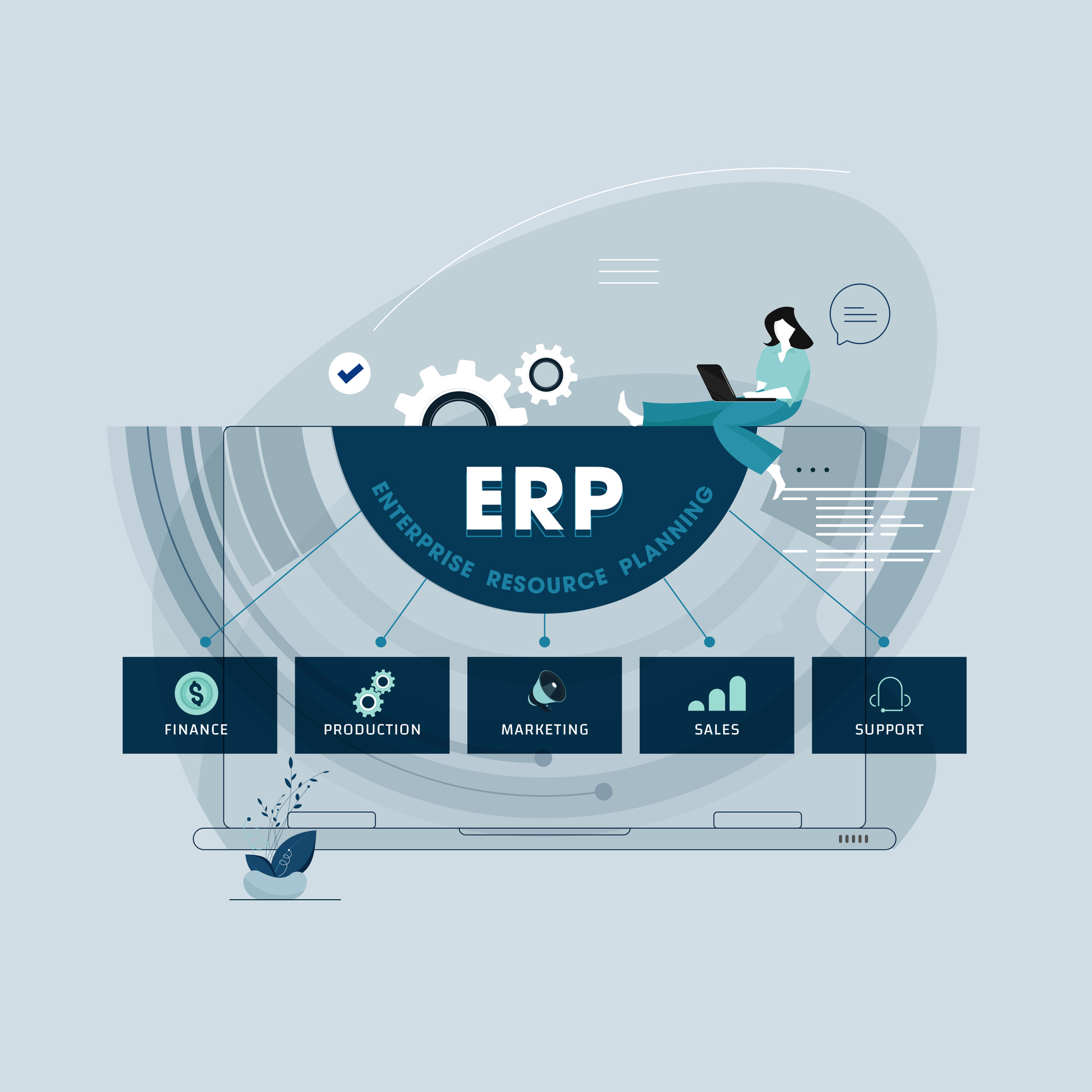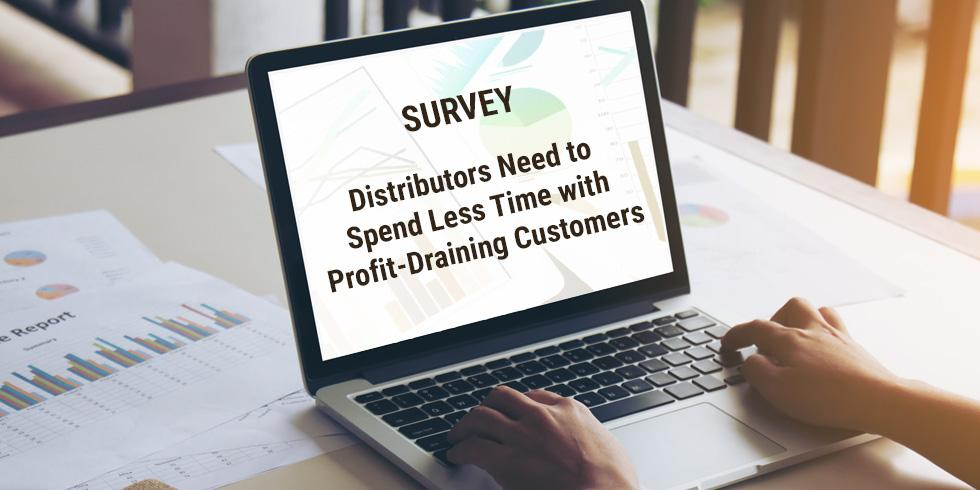The post-COVID economy taught businesses a harsh lesson – without sufficient liquidity, companies cannot navigate and adapt to market disruption. As a result, businesses must find growth strategies that stimulate higher profits and yield higher returns on two of their core assets – inventory and customer base.
Many companies tend to go into reactive mode when defining their sales strategies. Lacking critical insight into the actual drivers of their inventory and sales activity, sales strategies are determined based on precedent and an instinctual motivation to avoid disrupting the sales flow of the “perceived” top performing customers.
In many cases, since sales volume is the only metric that can be reliably tracked, sales strategies rarely evolve beyond pricing incentives and inventory replenishment goals that only ensure that past sales history will repeat itself. Effective sales strategies must evolve beyond merely assuring the status quo of constant sales and flat margins. Companies must embrace a holistic, analytical sales strategy approach that identifies opportunities to grow top line revenue and EBITDA – not at the expense of the other, but together.
Customer Stratification is one such sales strategy-building approach. In fact, a 2023 NAW Executive Summit reinforced the importance of customer stratification. The message was that businesses must shift focus from top line revenue and market share growth to creating strategies for promoting growth with profit.
What is Customer Stratification?
In its simplest form, Customer Stratification is a formulaic, analytics-driven way of categorizing customers. The framework was borne out of an acknowledgment that within a company’s customer base, unique behaviors and attributes exhibited by those customers will in turn have different impacts on the company’s top line revenue. Which customers generate the most profitable business? Which customers are a drain on profit? Customer stratification enables businesses to categorize their customers such that these findings can be identified, quantified, and measured and tracked over time–and then the appropriate sales strategies can be devised to grow top line revenue, margin and EBITDA..
A typical customer stratification process segments customers into four main classifications:
- Core. Customers in this segment are the most important for a business’s success. These customers have high buying power and are low risk due to their loyalty, high profitability, and a reasonable cost-to-serve.
- Opportunistic. Customers that have reasonable buying power, loyalty, and margins, and only require standard services are typically in this segment. They often buy from the business for hard to find items. The goal is to convert these customers to the Core segment without sacrificing margin or substantially increasing cost-to-serve.
- Marginal. These customers are known for mediocre buying power and loyalty, low margins, and fairly high cost-to-serve.
- Service Drain. Identifying these customers can be difficult. They often act like Core customers because they have high buying power and loyalty. However, a customer stratification process will identify that they also have a very high cost-to-serve. They buy in volume, but they want low prices and demand high levels of service.
The model goes beyond mere customer sales and inventory turns as the sole determinant for devising sales strategies. Customer stratification assesses multiple levels of crucial sales activity metrics to appraise the comprehensive value of customer sales and items sold. The sales activity metrics incorporated in most customer stratification models are usually aggregated into the following or similar type categories:
- Buyer Power. The power a buyer has to affect the price and quantity of goods sold. Powerful buyers can negotiate based on the volume they purchase and their ability to find alternative products.
- Customer Loyalty. Loyal customers have an ongoing positive relationship with a vendor. They’re willing to work with the vendor to their mutual benefit and choose the vendor over others with similar products/services.
- Profitability (GM). The gross margin (GM) a customer generates based on the level of revenue produced compared to the cost of serving and retaining the customer.
- Cost to Serve. The combination of costs required to retain a customer such as order size, return rate, customer service resource time, etc.
Best-in-class customer stratification can extrapolate these sales activity metrics across customer and inventory classifications, financial periods, sales territories, regions and branches and salespersons.
What are the Goals of Customer Stratification?
At the highest level, customer stratification is seen as an effective means for driving both revenue and profit growth. Within those overarching goals, businesses use this framework with other types of goals and objectives in mind:
Balancing Automated and Personalized Customer Service
Not all customers need or want the highest level of customer service a business can provide. Customer stratification can help identify the level of service required by different customer segments, and the extent to which a personalized vs. a more automated way of interacting with those customers is needed to maintain happy–and profitable–customers.
Automated services such as self-service portals for example can extend convenience and speed to the customer, replacing the more traditional personal contact from a salesperson or frequent interaction with customer service. Robust modeling will inform businesses on the customer mindset at each stage of the relationship, allowing them to determine when it might not be necessary, or profitable, to provide totally personalized service.
Pricing Optimization
Determining optimal product pricing is a perennial challenge for manufacturers. Far from an exercise in assigning an arbitrary number to products, finding the perfect price point requires consideration of a number of variables like raw materials, shipping costs, warehousing fees, labor expenses, etc. One variable in particular however, Cost to Serve, is the predominant factor in setting prices, and precision-like stratification of customers is essential in knowing the true cost of serving each customer type.
The application of the customer stratification framework enables a data-driven approach that identifies the sweet spot where your bottom line is flourishing and your customers are happy.
Aligning Sales Strategies to Customer Segments
Sales success starts with a deep understanding of customer segments. By aligning sales efforts with the specific needs and preferences of each segment, teams can create custom strategies that address a customer’s unique pain point, fulfilling their needs and desires. This strategic alignment of sales strategies with customer profiles allows organizations to differentiate themselves from competitors and positions teams to make data-backed decisions on:
- Protecting and maintaining Core customers
- Increasing the number of Core customers to offset normal churn
- Targeting different existing Non-Core segments with approaches that will move them toward the Core segment
Educating Customers
The analytics produced within a customer stratification framework not only help organizations with more sophisticated customer experience and sales strategies, but also serve to educate the customer on optimal buying behavior. For example, a customer who makes multiple and frequent returns or places multiple small orders daily might not have any measurable way of understanding that shifting their behavior to minimizing returns or consolidating orders can in the end save them money. With a fully institutionalized customer stratification model in place, customer relationship managers can use unique customer data to identify unprofitable behavior, use data-backed findings to educate the customer on a more optimized way of behaving, thereby engendering a deeper level of trust and stronger relationships.
Aligning Sales Teams with Business Strategy
True transformation in an organization’s financial performance comes when sales teams and their associated strategies and actions are aligned with company goals and objectives. Such alignment is a natural outcome of the customer stratification model in that when customers are accurately segmented, organizations can create more targeted and effective strategies to attract the most profitable customer type, develop products and customer service programs that meet the specific needs of different customer groups, and ultimately, build stronger relationships and more loyal customers.
This process is even more effective when sales team compensation is structured to reward them for meeting goals that support company growth and profitability objectives. Sales teams can use customer data to reinforce behaviors that move customers up in the hierarchy–and resolve issues that move them down. Possessing such insight gives businesses a distinct competitive edge and empowers their sales team for success.
Customer Stratification Examples
The following examples are real-world applications of the customer stratification methodology and show how powerful and transformative the framework really is.
A heating and air distributor in the Raleigh/Durham North Carolina area launched their customer stratification program in 2014, and followed the National Association of Wholesaler-Distributors (NAW) best practices for implementation. For this particular company, 5% of their customers generated between 80-90% of their net margins.
The implementation of customer stratification helped uncover some astounding realities. For example, one of their customers that was generating revenues in the six figures had long been considered a top account based on revenue alone. But through application of the customer stratification model, the distributor discovered that the customer was generating a very low GM–and that the GM trend was negative. Clearly not a Core or even Opportunistic customer, this customer was reclassified as a Service Drain account, and the sales team adjusted the time spent on this customer accordingly.
One of their other customers, one that was generating revenues in the five figures, was moved from an account that didn’t have much visibility given their lower contribution to overall revenues to a Core account. Why? Because the analytics uncovered that their GM was not only 5 points higher than the customer generating six figures, but that their GM was also trending up 46% year-over-year.
This particular distributor runs stratification reports quarterly, and sales teams create plans for upcoming quarters armed with that information. And, the sales teams are compensated based on meeting goals driven by the stratification model. For example, they pay special attention to customers who have moved out of the Core segment and formulate plans to shift those customers back into Core status–and they also use their analytics to identify those customer with potential to grow into Core customer status.
In the end, customer stratification has ensured that this organization’s sales force is focused on doing what’s right for the business, and they get compensated accordingly.
Benefits of Customer Stratification
Almost every department within a business can benefit from the incorporation of the customer stratification methodology. Sharing the resulting analytics across the business as well as with customers can build a high level of buy-in on primary business objectives, and functions to align incentives among management, sales teams, and customers. As we’ve alluded to above, one of the primary benefits of the customer stratification framework is that it helps ensure teams are focusing their attention and energies in the right places, and helps them quickly identify:
- Customers that need more or less attention from sales and management to remain satisfied and to generate profits
- Trends that need to be evaluated quickly to identify actions that will stop negative trends and support positive trends
- Strategies that should be used with specific customers
- When strategic focus is needed to support a customer segment
- Salespeople who need coaching to effectively manage the customer relationship
Strategic Internal Coordination
When the importance of catering to Core customers is clear organization-wide, each department can determine what can be done to cater to those customers.
For example, inventory that is in short supply can be reserved for Core customers, and determining whether to stock an item can consider the needs of Core customers. Truck routes can be scheduled to account for Core customer requirements, and marketing and sales campaigns can be tailored to reach potential Core customers.
Customer Incentive Planning
Rather than offering the same incentives to all customers, businesses can tailor incentives based on customer stratification. Core customers could be offered dedicated sales resources, free shipping, and higher discounts. By educating all customers, Non-Core customers won’t see favoritism if their discounts are lower and they’re restricted to using online sales resources, for example.
Benchmarking Performance
Businesses now have a way to perform benchmarking based on solid information. The product mix and overall performance of Core customers can be used during account reviews with other customers to help them understand why they are in a particular segment and what they’d need to do to move to Core status. Stratification results can also be used to benchmark the performance of salespeople, customer segments, and product categories.
Analyzing and Mitigating Risk
Identifying risks before they become debilitating can help every business. Core customer performance can act as advanced warning of a potential risk. For example, if Core customers start to reduce purchases, it could be an indicator that the business’s pricing is off, or that a competitor is targeting a business.
Customer Stratification as an Engine of Growth
The advantages of customer stratification can help companies address and resolve some of their most vexing business challenges such as:
- Growing sales and margins even in the most competitive of economic environments
- Increasing sales and yields from profitable customers without risking damage to the customer relationship
- Growing sales of underperforming customers using the most cost-effective means possible
- Generating higher profits from tight-margin customers with high levels of service drain
- Aligning sales resources to customer/inventory sales mixes that have a faster sales conversion cycle and generate higher margin yields and EBITDA
Companies that infuse customer stratification analytics capabilities into their strategic sales planning are more effective than their peers in the following areas:
- Deployment of sales assets
- Ability to negotiate with customers
- Generating and identifying new growth opportunities
- Optimizing item pricing
- Managing inventory
- Publishing sales content and marketing communications
- Aligning sales compensation to company goals
- Growing return on assets and shareholder value
- Mitigating risk of customer defection
Why It’s Crucial to Get the Implementation Right
Many companies that have attempted to implement customer stratification have been slow to realize the methodology’s full benefit and impact on driving growth–or have outright failed in its deployment. This is mainly due to lackluster functionality and features of the customer stratification software itself, and/or the consultant used to assist the company in its implementation.
Best-in-Class customer stratification tools and software possess sophisticated analytic methods that can 1) form and present actionable insights, 2) easily perform calculations quickly and repetitively within the timeframes needed and 3) document and correlate evolving goal benchmarks and actual results to determine success.
Top customer stratification consultants possess deep implementation experience and have practical tools and plans to simplify the process. They possess a deep understanding of customer stratification principles. They have an established track record of adapting these principles to the unique sales environment of each customer and providing them ongoing support and instruction beyond implementation to assure their success of adoption.
Customer stratification is a transformative and powerful means to elevate a company’s ability to define and deploy effective sales strategies oriented towards growing both top line revenue and profit growth. The above guidelines will help companies that are considering adopting this framework be mindful of the important role the right set of tools and the right advisor play in the overall success of implementation. Ultimately, it’s not just the model itself, but also the tools and people that together ensure a company’s success in applying customer stratification principles to address its overall objectives.
















